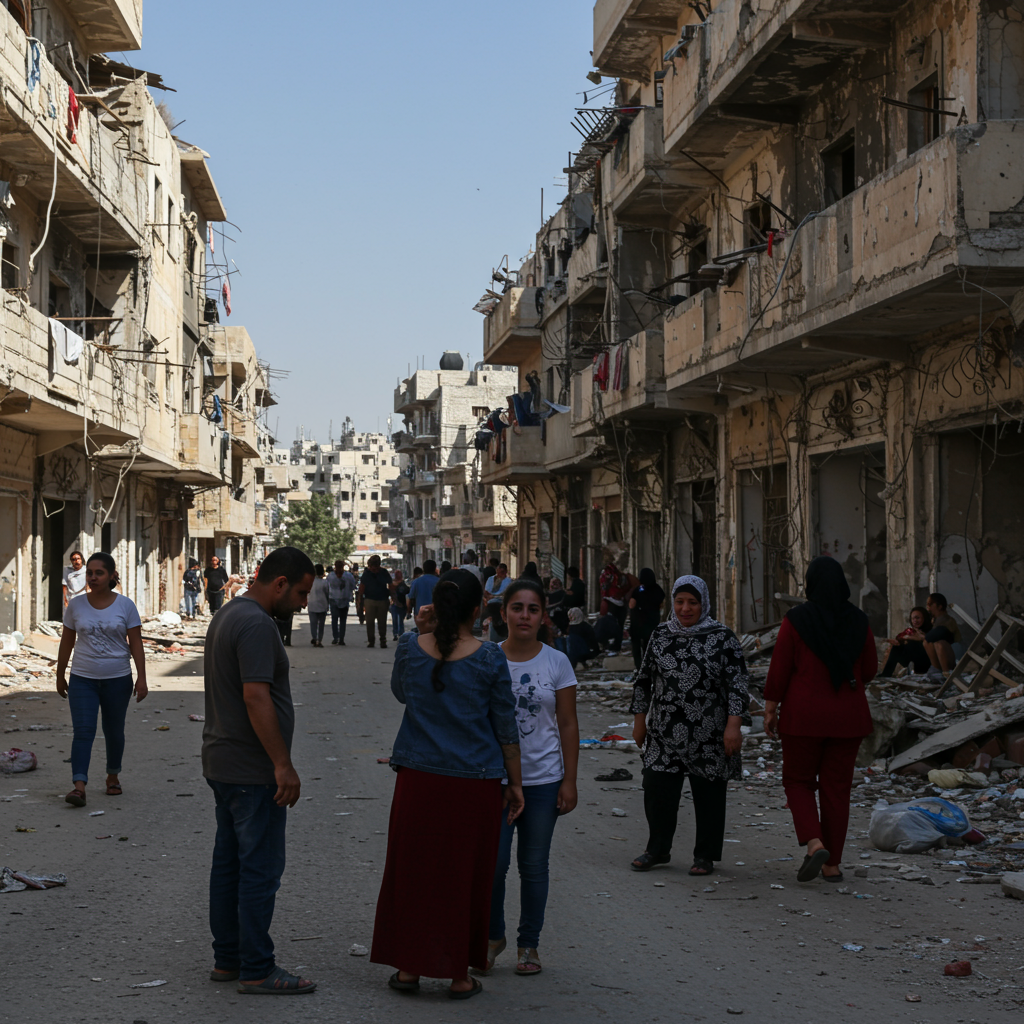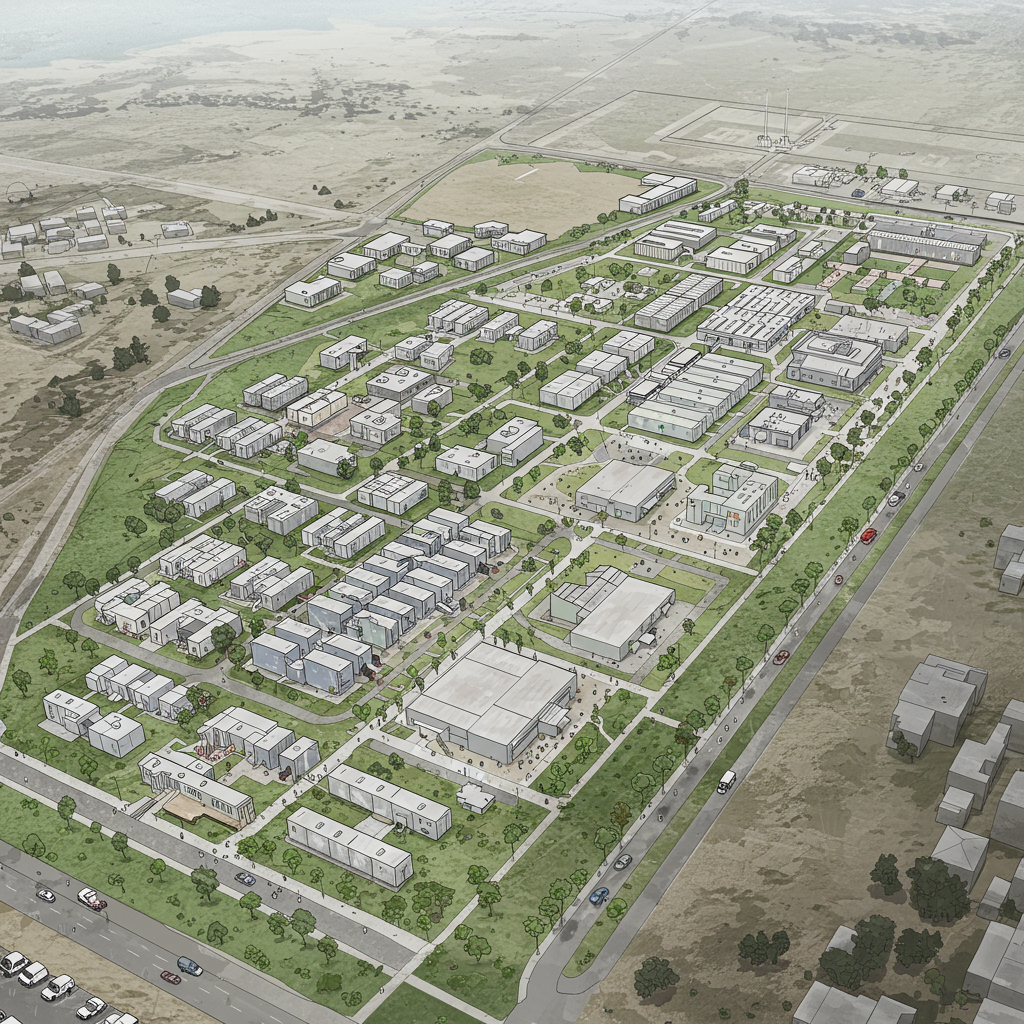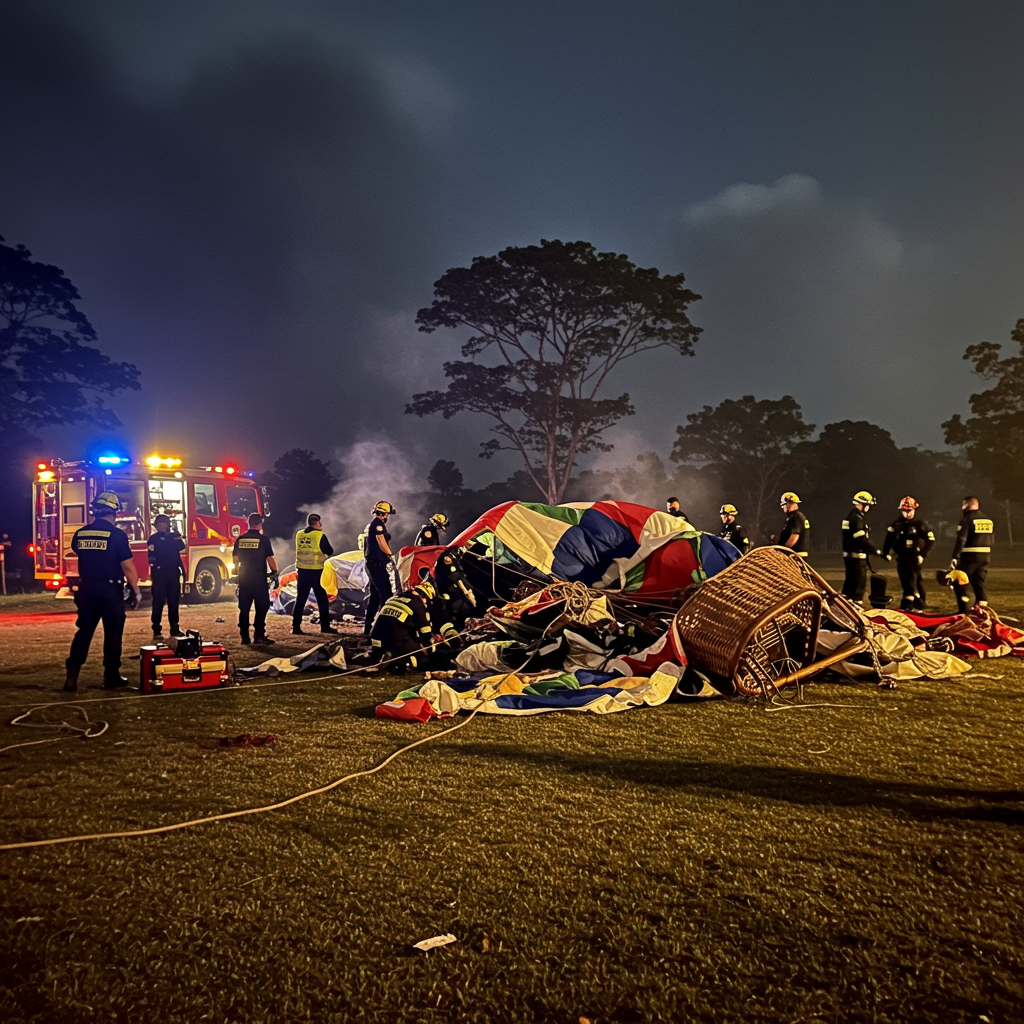Deadly israeli strikes swept across the Gaza Strip overnight and into Saturday, June 28, 2025, claiming the lives of at least 72 people, according to health workers. This surge in violence unfolded amidst reports of improving prospects for a ceasefire agreement, now over 21 months into the war that began on October 7, 2023. The latest fatalities underscore the intense human cost of the protracted conflict as diplomatic efforts reportedly gain momentum.
The toll from the overnight assaults was significant. In one devastating strike, a family of five – three children and their parents – were killed while sleeping in a tent camp located in Muwasi, near the southern city of Khan Younis. Relatives shared heartbreaking accounts of finding the family’s bloodied bodies, questioning the reason for their deaths. The tragic scene saw mourners placing red flowers into body bags as they grieved over the victims.
Widespread Casualties Reported Across Gaza
Multiple locations across the besieged territory were hit, leading to a grim procession of bodies arriving at overwhelmed hospitals. Staff at Shifa Hospital in Gaza City reported receiving 12 bodies from an area near the Palestine Stadium, a site sheltering displaced individuals. Another eight people were killed in strikes on apartments, with their bodies also taken to Shifa. Health officials confirmed that over 20 bodies were transported to Nasser Hospital in the south.
Later on Saturday, violence continued. A midday strike on a street in eastern Gaza City resulted in 11 deaths, with the bodies taken to Al-Ahli Hospital. This same hospital also received eight bodies, including five children, from another strike on a gathering in the eastern part of the city. Further south, a strike on a gathering at the entrance to the Bureij refugee camp in central Gaza killed two people, according to Al-Awda Hospital. These widespread incidents paint a stark picture of the daily dangers faced by Gaza’s population.
Signs of Ceasefire Progress Emerge
Despite the ongoing military operations, signals from international mediators suggest that a potential pause in fighting could be on the horizon. U.S. President Donald Trump expressed optimism on Friday, stating that a ceasefire agreement might be reached within the next week. He confirmed that the U.S. is actively working on resolving the situation in Gaza.
Adding to the diplomatic activity, an official familiar with the discussions indicated that Israeli Minister for Strategic Affairs Ron Dermer is scheduled to visit Washington next week. Talks are expected to cover a potential Gaza ceasefire, the recent agreement between Israel and Iran, and other regional issues. These developments suggest a renewed push behind the scenes to halt the violence and address underlying issues.
Navigating Complex Negotiations
Indirect talks between Israel and Hamas have faced numerous setbacks since Israel ended the most recent ceasefire in March, resuming its intensive military campaign. The conflict, ignited by the Hamas attack on Israel in October 2023 that killed approximately 1,200 people and resulted in 251 hostages being taken, has devastated Gaza.
The fate of the estimated 50 remaining hostages in Gaza remains a central point of contention. Fewer than half are believed to still be alive. Families of the captives continue to hold weekly rallies, which resumed following the recent Israel-Iran ceasefire. There is hope among these families that President Trump’s reported involvement in facilitating the Israel-Iran agreement could translate into increased pressure to secure a deal in Gaza, potentially involving a hostage exchange.
Political Landscape and Demands
The political dynamics surrounding a ceasefire are intricate. Israeli Prime Minister Benjamin Netanyahu is reportedly benefiting from public support following the recent actions concerning Iran, which some analysts believe could give him more political flexibility regarding the Gaza conflict. However, his far-right governing partners remain strongly opposed to ending the war prematurely.
Hamas has consistently stated its readiness to release all remaining hostages in exchange for a complete end to the war in Gaza. Netanyahu, however, has rejected this demand, insisting that the war will only conclude once Hamas is disarmed and exiled from the territory – a condition the group has refused. These opposing stances highlight the significant hurdles still facing negotiators attempting to broker a lasting peace.
A Humanitarian Catastrophe Deepens
Beyond the violence, the humanitarian situation in Gaza is described as catastrophic, primarily due to severe hunger and lack of essential supplies. After blocking all food aid for two and a half months, Israel has allowed only a limited trickle of supplies into the territory since mid-May, which aid organizations deem woefully insufficient.
The distribution of this limited aid has also become a perilous undertaking. According to Gaza’s Health Ministry, over 500 Palestinians have been killed and hundreds more wounded while attempting to access food distributed by the newly formed Gaza Humanitarian Foundation over the past month. Palestinian witnesses allege that Israeli troops have opened fire on crowds gathered on roads leading to distribution sites. The Israeli military has denied firing directly at civilians seeking aid, stating they have only used warning shots and are investigating incidents where civilians were harmed near these locations. On Saturday, the death toll included two people reportedly killed by Israeli gunfire while waiting for aid near the Netzarim corridor, a road separating northern and southern Gaza.
Securing food requires extreme risk. Thousands of Palestinians are forced to walk for hours through Israeli military zones to reach aid points. Separate efforts by the United Nations to distribute limited food supplies have also been hampered by challenges, including looting by armed gangs and desperate crowds overwhelming aid convoys, further complicating relief efforts for the starving population.
Frequently Asked Questions
What happened during the Israeli strikes in Gaza on June 28, 2025?
Israeli strikes across the Gaza Strip overnight and into Saturday, June 28, reportedly killed at least 72 people. Specific incidents included strikes on a tent camp near Khan Younis that killed a family of five, attacks near the Palestine Stadium and on apartments in Gaza City, a strike on a street in eastern Gaza City, and attacks on gatherings in eastern Gaza City and near the Bureij refugee camp entrance. Bodies were transported to multiple hospitals, including Shifa, Nasser, Al-Ahli, and Al-Awda.
Are ceasefire talks making progress in the Gaza conflict?
Reports indicate improving prospects for a ceasefire agreement, over 21 months into the conflict. U.S. President Donald Trump expressed hope for a deal within the next week, confirming active U.S. involvement. Israeli Minister Ron Dermer is scheduled to visit Washington for discussions that will include a potential Gaza ceasefire. However, indirect talks have been intermittent, and significant disagreements remain between Israel and Hamas regarding conditions, particularly concerning the release of remaining hostages and the future status of Hamas.
How dangerous is it for Palestinians to get humanitarian aid in Gaza?
Obtaining humanitarian aid in Gaza is currently extremely dangerous. According to the Health Ministry in Gaza, over 500 people have been killed and hundreds wounded in the past month while attempting to access food distribution sites. While Palestinian witnesses claim Israeli troops have fired on crowds, the Israeli military asserts it only fires warning shots and is investigating incidents. Hunger is widespread due to limited aid access, with Palestinians risking journeys through military zones to reach distribution points. Aid distribution efforts are also challenged by looting and desperate crowds.
Conclusion
The high death toll from recent Israeli strikes in Gaza serves as a stark reminder of the ongoing and devastating conflict impacting the civilian population. While diplomatic efforts appear to be intensifying, with figures like U.S. President Trump expressing hope for a ceasefire, significant obstacles remain. The dire humanitarian crisis, particularly the perilous conditions surrounding aid distribution, continues to exacerbate the suffering. The fate of the remaining hostages and the fundamental disagreements between Israel and Hamas over the conflict’s resolution underscore the complex path ahead for achieving a lasting peace in the territory.
Word Count Check: 1045



